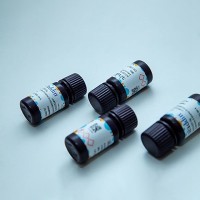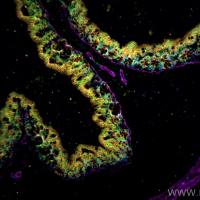Random Primed Labeling of DNA
互联网
576
Random primed labeling of DNA has now almost superseded the method of nick translation of DNA. Random primed labeling, based on the method of Feinberg and Vogelstein (1) is a method of incorporating radioactive nucleotides along the length of a fragment of DNA. Random primed labeling can give specific activities of between 2 � 109 and 5 � 109 dpm/μg (see Note 1 ). The following method is essentially that described by Feinberg and Vogelstein (2) in which a DNA fragment is denatured by heating in a boiling water bath. Then, random sequence oligonucleotides are annealed to both strands. Klenow fragment polymerase is then used to extend the oligonucleotides, using three cold nucleotides and one radioactively labeled nucleotide provided in the reaction mixture, to produce a uniformly labeled double-stranded probe. Each batch of random oligonucleotides contains all possible sequences (for hexamers, which are most commonly employed, this would be 4096 different oligonucleotides) and so any DNA template can be used with this method.









